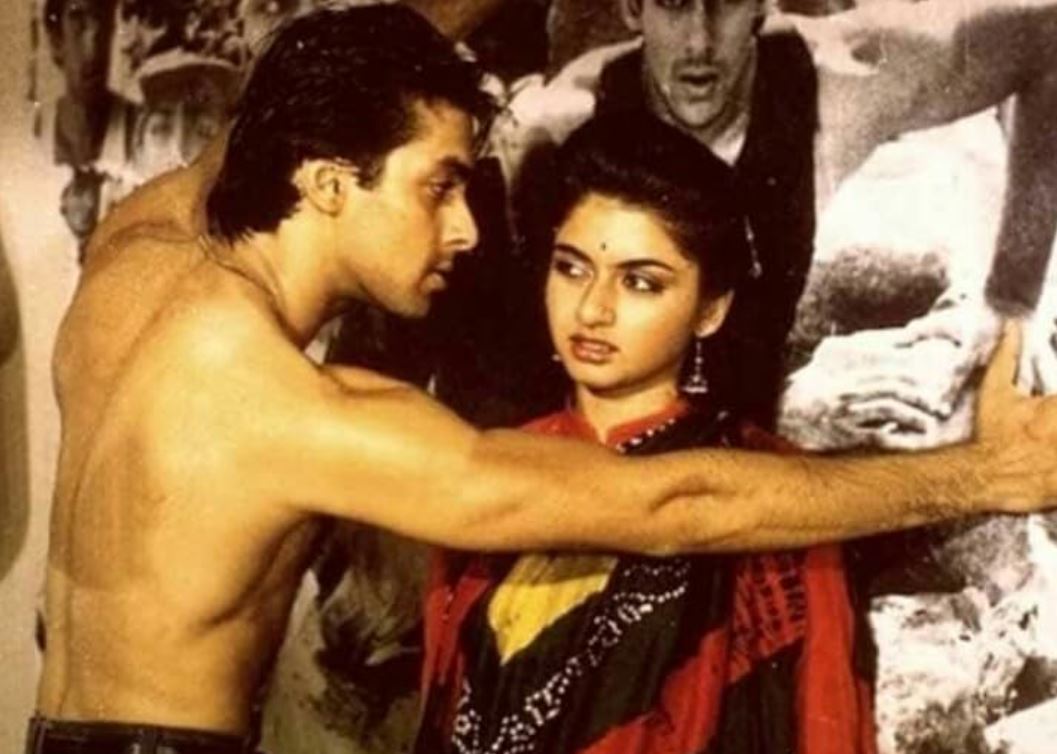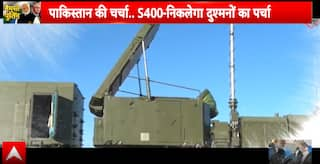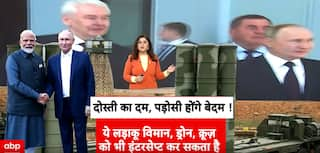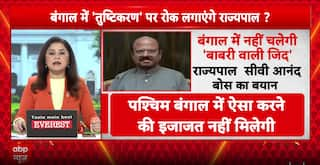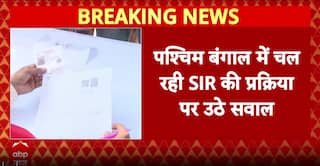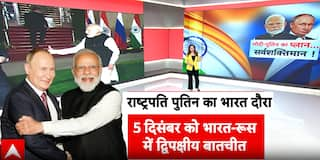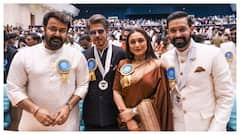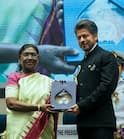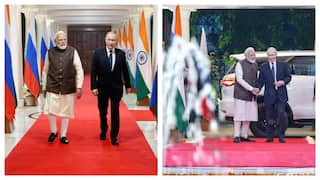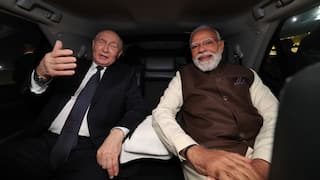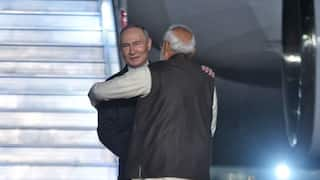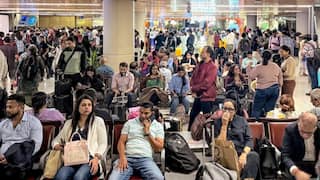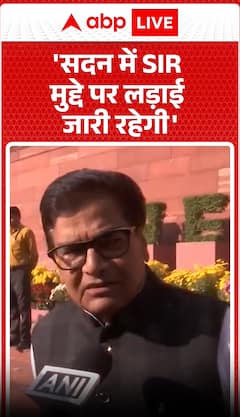Birthday Special: Watch Love-Sick Prem Aka Salman Khan In 'Maine Pyar Kiya' For His Undying Charm
'Maine Pyar Kia' is a throwback to the kind romantic hero image Salman Khan once had & the one that seems to have changed, lost amid action-packed films he has become an emblem of.

New Delhi: 'Maine Pyar Kia' directed by Sooraj Barjatya is regarded as one of Salman Khan's career-defining films. It is also iconic and has a cult status, thanks to its love and friendship template, songs, humour and a complete entertainer package, the three hour films once were.
Released on December 29, 1989, 'Maine Pyar Kia' became the highest-grossing Bollywood film of the year. Its eleven songs with a run time of more than an hour became iconic tracks that continue to find their way in contemporary times in all formats.
Maine Pyar Kia Movie
'Maine Pyar Kia' is what we call today the 'formula' film. It has two young friends-lovers with opposing families who later have a reconcialiation with a well-defined catharsis for all.
Salman Khan plays Prem, the young and rich heir to his father Rajeev Verma( Kishan) while Bhagyashree( Suman) is the well-brought up daughter of a diesel mechanic played by Aloknath( Karan).
Karan and Kishan are best of friends until fame and money comes in and changes everything in between.However, like most Sooraj Barjatya films, 'Maine Pyar Kia' takes a simple plot and turns it into a classic worth watching for its actor's performances, humour, songs, cinematography, and more.
Maine Pyar Kia Dialogues
Among other things, this Sooraj Barjatya film brought the cliches, so often used, into existence. 'Ek ladka ladki kabhi dost nahin ho sakte" (A boy and a girl can never be only friends); "Dosti ka ek usool hai - no sorry, no thank you" (Friendship has one rule - no sorry, no thankyou), "Aaj kal darwaze pe knock/lock karna ka zamana nahin raha" (These days, nobody bothers to knock / lock the door); "Abhi mood nahin hai" ( No mood today)...
Despite the problematics of some of them, these 'Maine Pyar Kia' dialogues indirectly and directly influenced the socio-cultural fabric of Hindi romance-friendship films, so much so, that later filmmakers( including Karan Johar until 'Ae Dil Hai Mushkil') justified or challenged these statements only to reinstate them as god-given.
Maine Pyar Kia Songs
The background score and album of 'Maine Pyar Kia' was composed by Raamlaxman, with lyrics by Dev Kohli and Asad Bhopali. Despite some hiccups and cringe elements like the 'molestation' scene by Mohnish Bahl, several tracks of the film became chartbusters.
'Maine Pyar Kia' released in the same year as 'Chandni' and both films held the record of being the best-selling soundtracks of the year besides also being ranked continually among the Best Soundtracks of Hindi cinema.
It's Antakshari sequence, one of the best choreographed and scored sequences in romantic films, is a standout and must-watch.
Maine Pyar Kia actors' performances
Not many know that Salman Khan was not Sooraj Barjatya's first choice for the film. Several publication reports at the time reported Salman Khan was not especially interested due to the soft nature of the film and that Barjatya was not very happy with Khan's first audition. Many also said that Salman Khan even suggested other names for who could be Prem but was later convinced by Barjatya. Bhagyashree, at the time was a part of Amol Palekar's TV show, and wanted to pursue higher studies and refused to do the film. Later, Sooraj Barjatya made several changes to the script, and Bhagyashree agreed to do the film.
Both Salman Khan and Bhagyashree gave iconic performances in 'Maine Pyar Kia, which suited the needs of the time.
Their chemistry looks and feels natural from the first scene they share in the film.
Mohnish Bahl, Rajeev Verma, Reema Lagoo, Laxmikant Berde, Pervin Dastur, Aloknath, Rajeev Verma; all deliver suitable performances for their parts in 'Maine Pyar Kia'.
Maine Pyar Kia cinematography
Aravind Laad's cinematography lends a 'complete entertainer' property to Sooraj Barjatya's 'Maine Pyar Kia'. Heightened emotions are complimented with well-shot songs, lush and vast landscapes of both greenery and concrete. Intimate moments are shot in intimate spaces like bathrooms, below work desks, behind doors, on terraces and more.
Use of special effects in scenes involving the iconic 'kabootar'( pigeon), antakshari sequence when Bhagyashree( Suman) confesses her love for Salman Khan(Prem) feel well-intentioned and suit the state of intensity of a particular emotion or intent a scene or sequence is set to portray.
The edit also helps in the regard that possible time lapses and extended run time are removed with the use jump cuts, and yet, like many Sooraj Barjatya's film, 'Maine Pyar Kia' will feel like a 'never-ending' film for many who would watch it in this day and age.
Maine Pyar Kia screenplay
Salman Khan, Bhagyashree film 'Maine Pyar Kia' has its heart in the right place. Like other Soorah Barjatya films, the film has a natural inclination towards chronology, follows a three-act structure, leaves no loopholes, and brings an organic close to several sub plots and loose threads.
Sour friendships become fruitful, lovers reunite, evil and greedy are exposed, a pigeon also gets its revenge, and everything that is in discord with the nature of 'Maine Pyar Kia' gets resolved in the end with a satisfying, cathartic, action sequence that feels the most real in time of the most unreal sequences lead by the likes of Salman Khan today.
Conclusion
Despite being so musically rich and overflowing with the ideals of romantic love, 'Maine Pyar Kia' has its problems. It is regressive on so many levels, but then again, the commercial entertainer factor and the time the film was made in, largely appealing to the majority of audiences then and representing the societal fabric, per se could be reasons why the film is the way it feels and looks.
Revisiting 'Maine Pyar Kia' today feels more like a nod to the times when the young-love genre was blossoming in Hindi cinema at the end of the 80s using the rich boy/girl and poor boy/girl template which then altered in the 90s completely to give love-sick films of unreal standards. A time when action felt real but a secondary part of the film. A time when the angry young men and women were no longer angry, less experimental, more unreal and cinematic texts were becoming intimate, and looking towards the 'family or romance' set up to resolve or rather escape all problems a changing country open to liberalization was then trying to make sense of.






